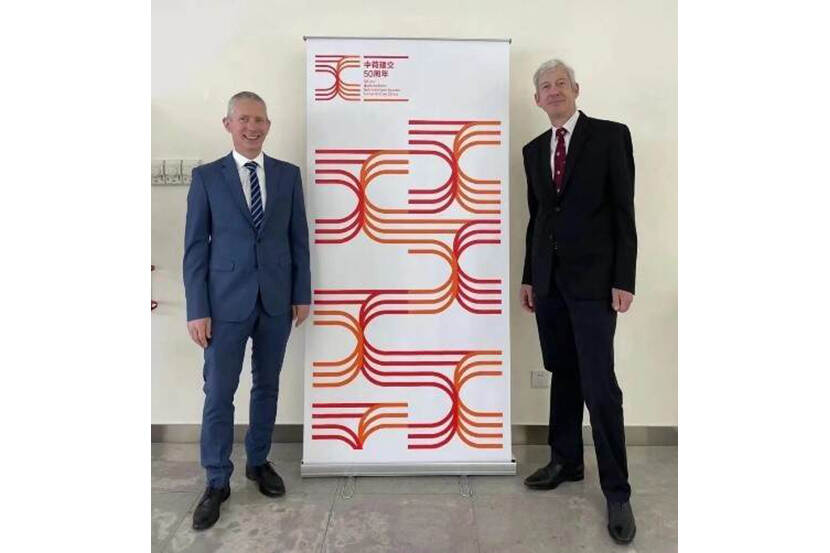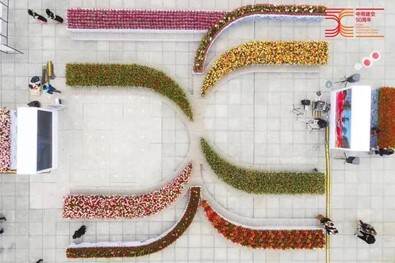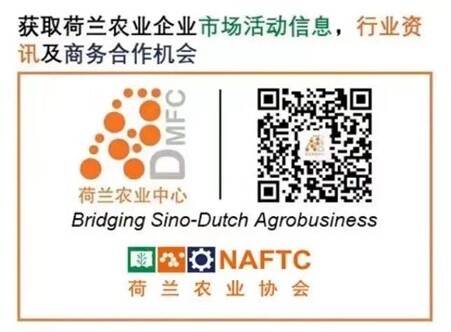Look forward of the agricultural counsellors on 50 years of diplomatic relations between China and Netherlands (part 2)
The year 2022 is the year marking the 50th anniversary of the diplomatic relations between the governments of the People’s Republic of China and the Kingdom of the Netherlands. To commemorate these 50 years in agriculture, Ina Enting, Director NAFTC, went to the Embassy of the Kingdom of the Netherlands in Beijing to meet with the Dutch agricultural counsellors: Wouter Verhey and Karel van Bommel. After looking back on 50 years in the first report, we evaluate and look forward in this second report.
“What’s the secret of the success of the good relationship between China and the Netherlands?” Ina is asking. “First of all, Netherlands is the second largest exporter in agriculture in the world, despite our tiny size.”, answers Karel delighted. He adds even more proudly that “China is for agriculture the largest non-European trade partner for the Netherlands, thus even a larger partner than the USA is for the Netherlands.”.

4 billion euro export
In the beginning of the trade relations (1988) the export value of Dutch agricultural products to China were 40 million euro per year. In a bit more than 3 decades it exploded 100-fold to 4 billion euro last year (2021). Machinery is still a small part of it (180 million euro) but its importance and size are growing. On the other hand, China exports drone equipment to the Netherlands valued over 100 million euro per year. And for China, the Netherlands is the second largest trade partner in agriculture within the EU.
“And the Dutch are do-ers.” adds Wouter to the success factors. “If we want something, we realize it, which fits perfectly to the Chinese habit.”. Last but not least, having a leading agricultural university as Wageningen UR is also very beneficial in the success of the Netherlands in China.
China’s Internet of Things
On the question what Netherlands can learn from China, Wouter replies: “China is well advanced when it comes to the internet of things. For instance, the use of big data and of algorithms related to data; the role of e-commerce also in agricultural business, or; adoption rate of internet in general including in the rural areas”. Karel adds: “And the use of drones in agriculture in for instance crop protection. Or the transformation of tractors driven by workers to self-propelled ones”.

It is clear that China is a frontrunner in the field of high-tech. And that the Netherlands can certainly learn from this. But there are, however, high-tech methods that are allowed in China and not (yet) in Europe/the Netherlands. For example, the application of CRISPR-Cas in breeding. Although research in the Netherlands applies the high-tech methodology, in practice it is not (yet) allowed. “There is a risk that we will fall behind China.”, Wouter says.

Netherlands’ Triple Helix model
Netherlands’ lead is in innovation processes. China is for instance very interested in the Dutch so-called Triple Helix model for innovative and applied research, supporting the various industries including agriculture. The corners of this model are formed by government, business, and research. Though these three parties have their stake in China too, the role of these parties in the Netherlands is different. In the Netherlands, the agribusiness companies participate actively and determine to a large extent what kind of applied research will take place. The government has a more facilitating role. As a result, innovations reach the business community more quickly and in a more focused way. That is less the case in China. Research in China is more under the direct influence of the government. If China wants to get more return from innovations, the Dutch model offers absolute inspiration for them.
Dutch companies in a specific sector must work together and offer a total concept
Future outlook
The Netherlands' commitment is to remain a global power in agriculture, but with a shift towards sustainability; and to export these innovations to its partner countries. China also has its environmental challenges, for example, and will have to produce more sustainably. The export position of the Netherlands in technologies and knowhow therefore only becomes more important over the export of food products. “In this,” Karel comments “is a greater need for chain-oriented solutions and not just one facet. Dutch companies in a specific sector must work together and offer a total concept.”
But China is also climbing the ladder of agriculture and food innovations. The next step may be more focused on partnerships and co-creation between The Netherlands and China in sustainable solutions.

Sino-Dutch relationship in 3 words
Ina asks as final question what three words would describe 50 years bilateral relations in agriculture between Netherlands and China. The two gentlemen must think deeply as three words is not enough to their opinion. China is too big, too dynamic, and too challenging to capture it in three words. An attempt is ultimately converted by the author to a description: Prosperous partnership, which is still maturing, and in which one needs to have patience. It’s a highly competitive environment always needing one’s attention.
Doing agricultural business in China is not a onetime adventure, it’s a lifetime pursuit!
